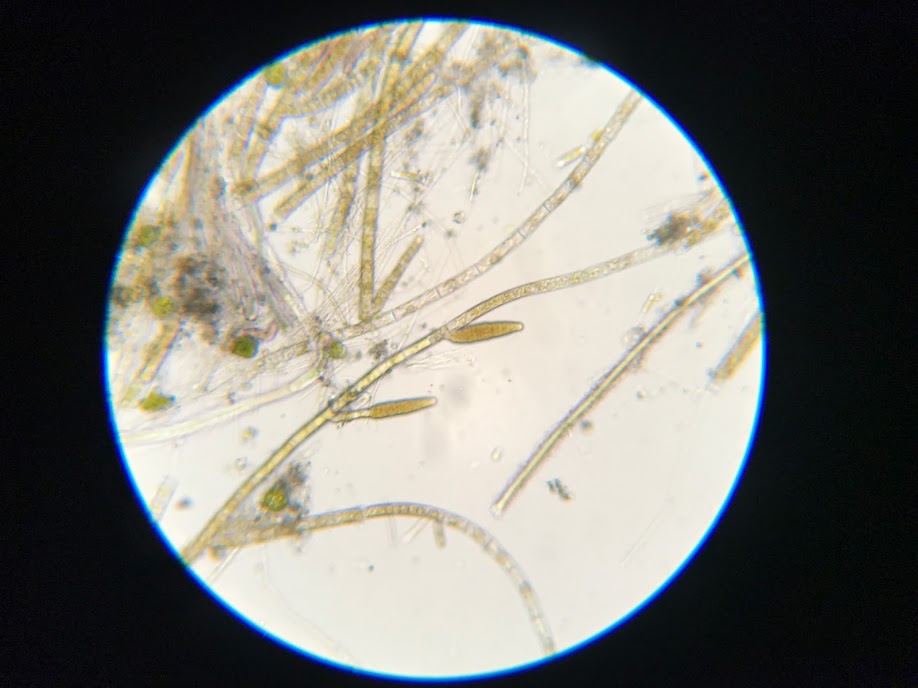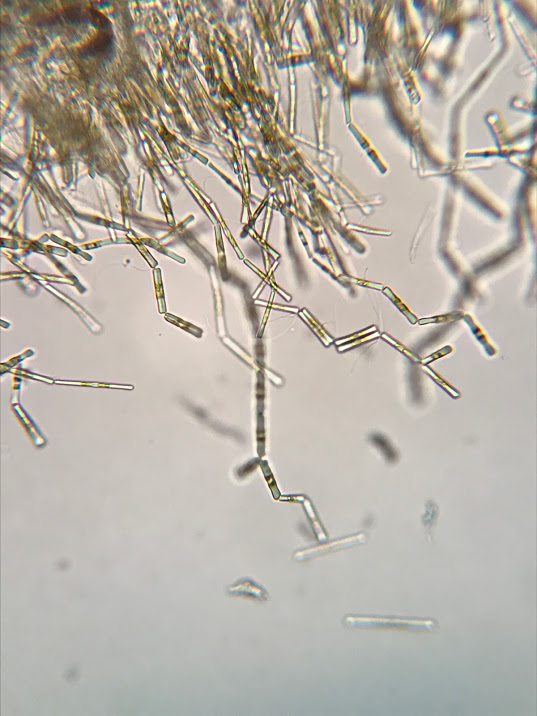- Joined
- Feb 29, 2016
- Messages
- 242
- Reaction score
- 66
Following
Follow along with the video below to see how to install our site as a web app on your home screen.
Note: This feature may not be available in some browsers.

W I had a cyano outbreak once. I used chemi clean and the next day one of my clowns died. Not sure if its related. But at that point i decided no chems. I turned the lights off for a few days added stronger power heads and fed less. It took a week or so but eventually the cyano went away. Changed my lights since then no issues. .
Hi HansIn my opinion the cause for many pest "algae" (cyanos, dinos, hair algae) is the nutrient balance. 5 ppm nitrate and .03 ppm Phosphate is a ratio of 167. In my eyes it should be 10 or even lower. In my experience it is not necessary to have detectable nitrate, at least not above 1 ppm, but it is better to have detectable phosphate, somewhere between .02 and .1 ppm in reactive phosphate, detectable with a test kit.
Nitrate is the end product of nitrification. To occur there must be a surplus in nitrogen compounds. This is why it is not necessary to have nitrates at all, there are enough other nitrogen compounds the corals prefer over nitrate.
I am quite sure that is a matter of competitive advantage if pest algae grow. Corals, coralline algae and other calcifyers seem to have a higher demand in phosphate. They have a competitive advantage when the nitrat phosphate ratio is low, for example at 7. If the nitrate phosphate ratio is high, let´s say 100 or higher, the competitive advantage is on the side of the cyanos, hair algae and dinos.
My bulbs are relatively new, been running just a couple months. My LEDs are Hydra 26 (original) and they are running at 15500K so DR, G, and W max out at 15%. I'm also running two MP40s and my tank is a standard 75 gallon, so I don't think my problem is related to flow. If anything I think that may be why I'm getting the "non standard" formation instead of the silk mats that cyano normally grows in (unless it does turn out to be dinos). Currently working on finding the balance to keep my SPS happy and colored up, but not the algae/bacteria that I'm experiencing now.When was the last time you changed your t5s? Poor lighting will make pest algae grow. There is some talk around about the red and green spec of lights cause algae outbreaks. I had a cyano outbreak once. I used chemi clean and the next day one of my clowns died. Not sure if its related. But at that point i decided no chems. I turned the lights off for a few days added stronger power heads and fed less. It took a week or so but eventually the cyano went away. Changed my lights since then no issues. Oh ya i also have on average perameters at ....

Hi salty,Hi Hans
It imbalance question seems to be constantly refuted by experts.
Do you have access to research on this?
No apology needed, this is great stuff! Very interested in what your nitrate dosing experiment turns up.I have very similar stuff in my tank. Mine is a stringy cyano that sometimes looks like dinos. I have looked at dozens of samples under the microscope and it is indeed cyano. My tank has always had undetectable nitrates and phosphates ranging from 0-0.8 ppm per Hanna ULR. I've toyed with nitrate dosing in the past, but never stuck with it or did a formal experiment. The 2 things I did notice from dosing were they were back to 0 the next day, and brown algae started to thicken.
I'm in the process of upgrading tanks so I've moved everything to a smaller tank with a large piece of (scrubbed clean, but not cooked) live rock from my DT. It's under new lighting (Radion) and has a new sand bed and the stringy cyano has already started (4 weeks in). I'm going to do some heavy experimenting on this tank, starting with nitrate dosing. I just really thinking it is about nutrient ratios but I'm not sure if nitrate dosing is a solution.
As far as the fuzzy stuff on your rock in you zoa pick - yep, got that too. Tons of it. Chrysophytes has been thrown around a lot, but I've seen 2 distinct forms under the microscope. One is most likely (I'm no biologist, I just google pictures) Ectocarpus (primarily longer and in tufts in some places):

And the other is ????? some kind of zig-zag diatom??? This is the short hair stuff that is all over my rocks. I have an Astrea snail that seems to eat it...

Trying to grow out SPS frags has been very difficult for me. They turn pale and don't grow. Feeding more just fuels the cyano and algae, not the corals. It's like I can't get to a critical mass of coral where they can outcompete the algae.
Sorry, I don't mean to hijack - just thought I'd share a seemingly similar experience.
Hi rck329,
first image looks indeed like Ectocarpus, maybe Ectocarpus siliculosus. It has formed gametangia.
The second image shows a zig-zag diatom. In both I agree with you.
You need to do something against silicate. I had this kind of diatom only with experimental silicate addition. Do you use a R/O?
Yep, sounds like you are on the right path. Just try and do minimal cleanings on the tank. Don't touch the sandbed, only turkey baste the rocks, keep equipment clean and try to stretch out water changes. The typical every week or bi-weekly changes may not be right for your tank. Usually, my corals respond to when a water change needs to happen. Meaning, they stay closed or just don't look as healthy. Right now I see this change on my tank every week and half. So for me, every 11-12 days I perform a wc.Alright, so I know a bunch more stuff went into this thread than what I originally posted, but I thought I'd give a little update and maybe some advice to anyone that is struggling with a similar situation.
SUCCESS AT LAST! ...sort of.
So I finally have detectable and steady nitrates at 5 ppm. I followed the advice of @reeferfoxx and just let the tank do it's thing. For anyone just coming in and not wanting to go through the whole thread, I basically had low nutrients that was leading to fading color. Every time I tried to increase them, I would get a sort of cyano outbrake so I would back off until it went away, then try again just to end up with the same results. The fix was simply continuing with the raised levels of nutrients and eventually everything evened out. My corals are finally starting to color up (and fairly quickly I might add), PE is starting to increase, as well as an increase in growth! My little problem now is I believe the rise in NO3 has caused my PO4 to drop out of detectable range, but I feel confident I will be able to get it where I want it without any further problems.
Turns out I just needed to compromise with myself. I wanted a clean tank, but also wanted colorful coral. Compromise a dirty tank for a month and now things are really starting to look up
Sounds about right! I didn't run chemi clean or carbon, but things still worked out. I did experience the drop in PO4, so my next job is getting that back up!The secret to this sauce is as follows. Dose slowly over a week to appropriate n03 levels. Cyano will inevitably follow as it does . Then run chemi clean for a few days and then carbon on and off for 12 hours 3-4 days feed heavy cyano will be gone and levels good. Enjoy tank. Be careful because adding n03 drops p04 and so does carbon so feed feed feed to keep p.
Right. I've pulled back to three week intervals on water changes, and I've even let the glass get and stay dirtyYep, sounds like you are on the right path. Just try and do minimal cleanings on the tank. Don't touch the sandbed, only turkey baste the rocks, keep equipment clean and try to stretch out water changes. The typical every week or bi-weekly changes may not be right for your tank. Usually, my corals respond to when a water change needs to happen. Meaning, they stay closed or just don't look as healthy. Right now I see this change on my tank every week and half. So for me, every 11-12 days I perform a wc.
